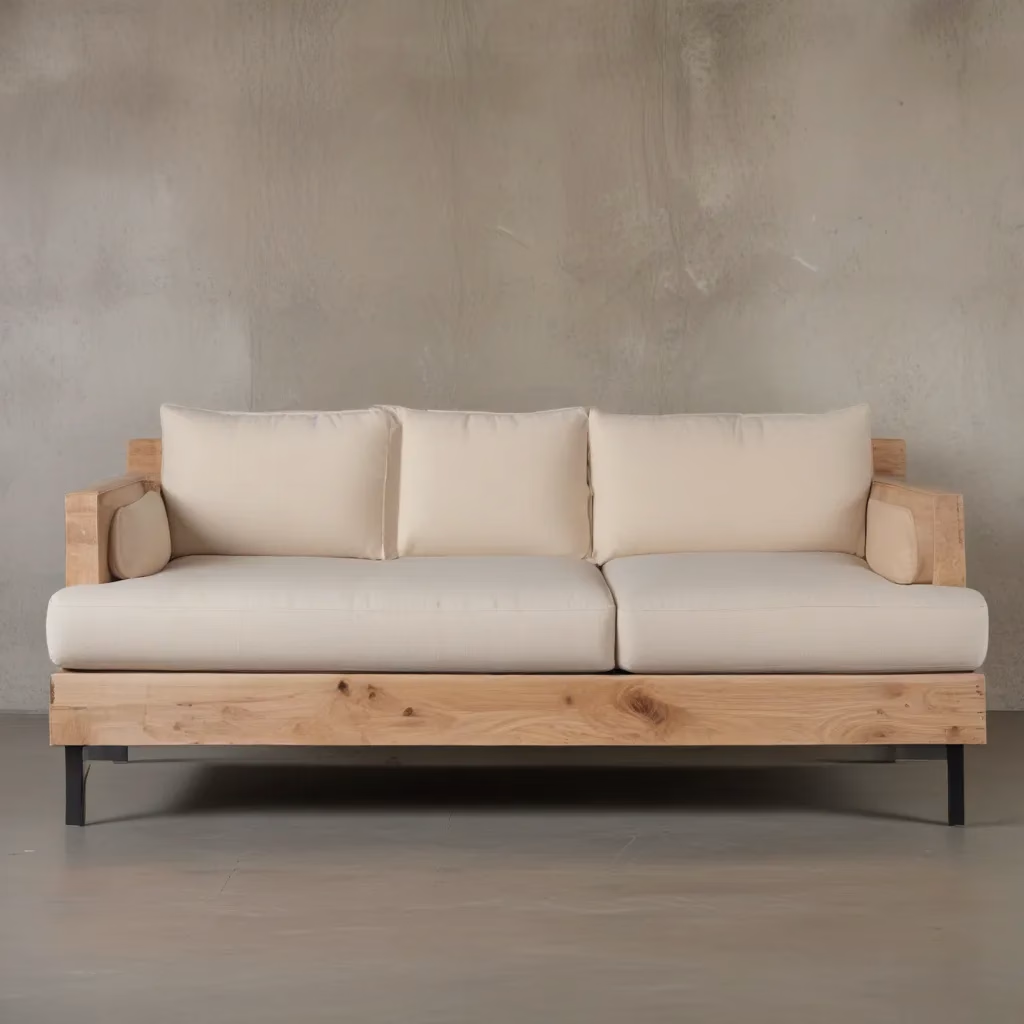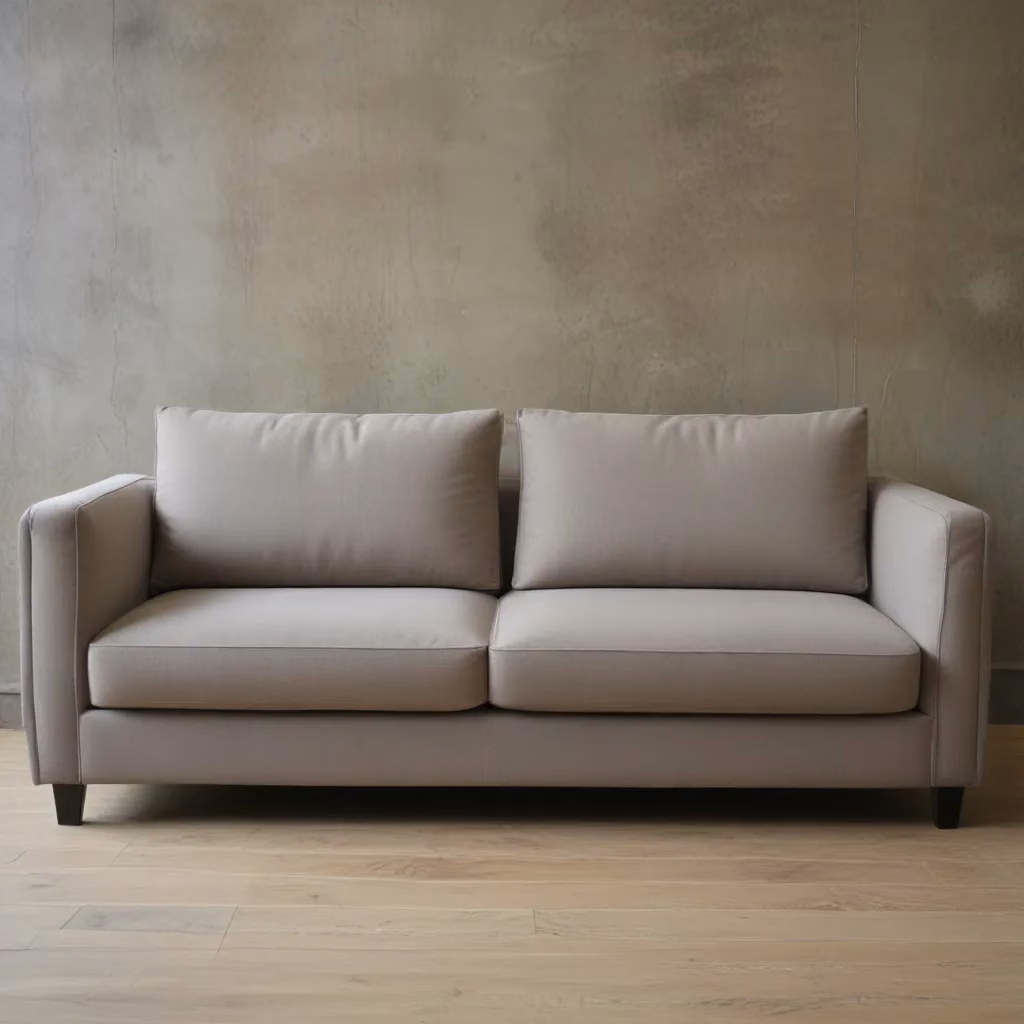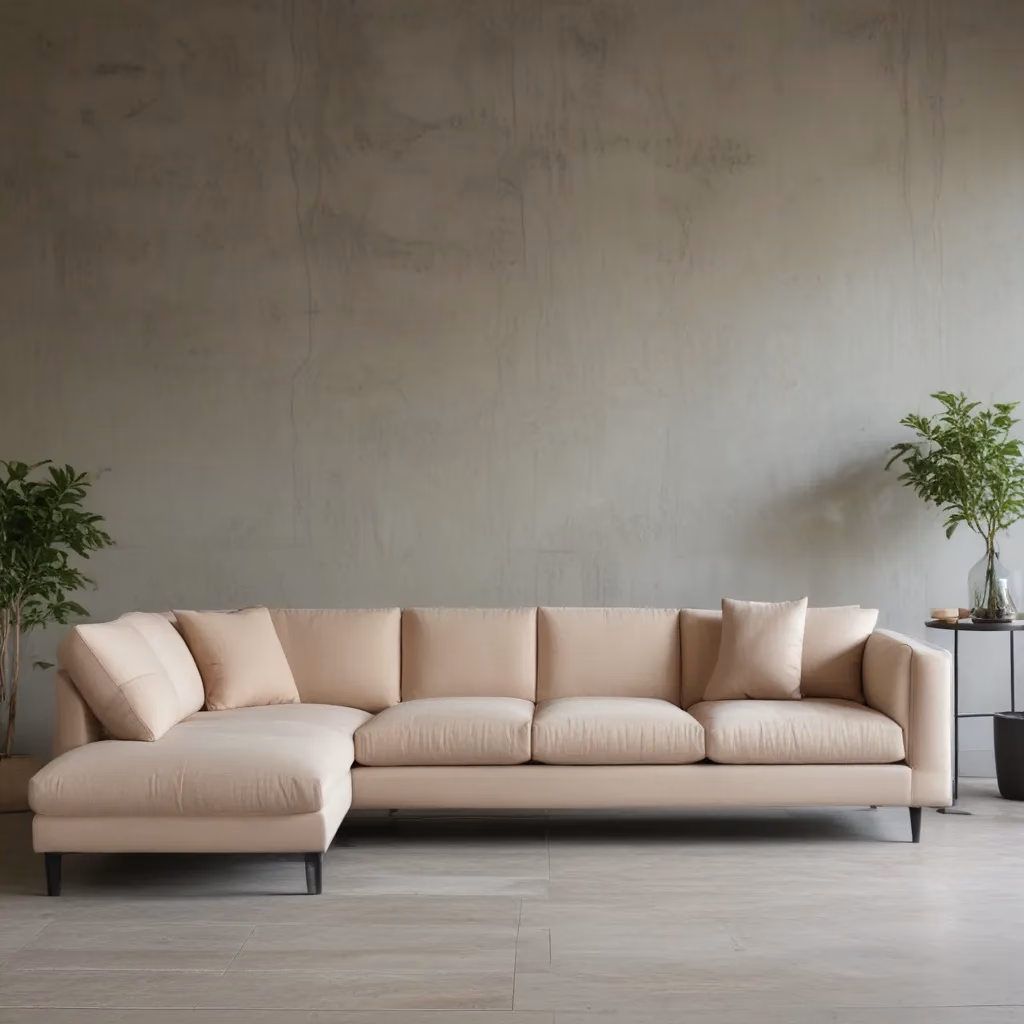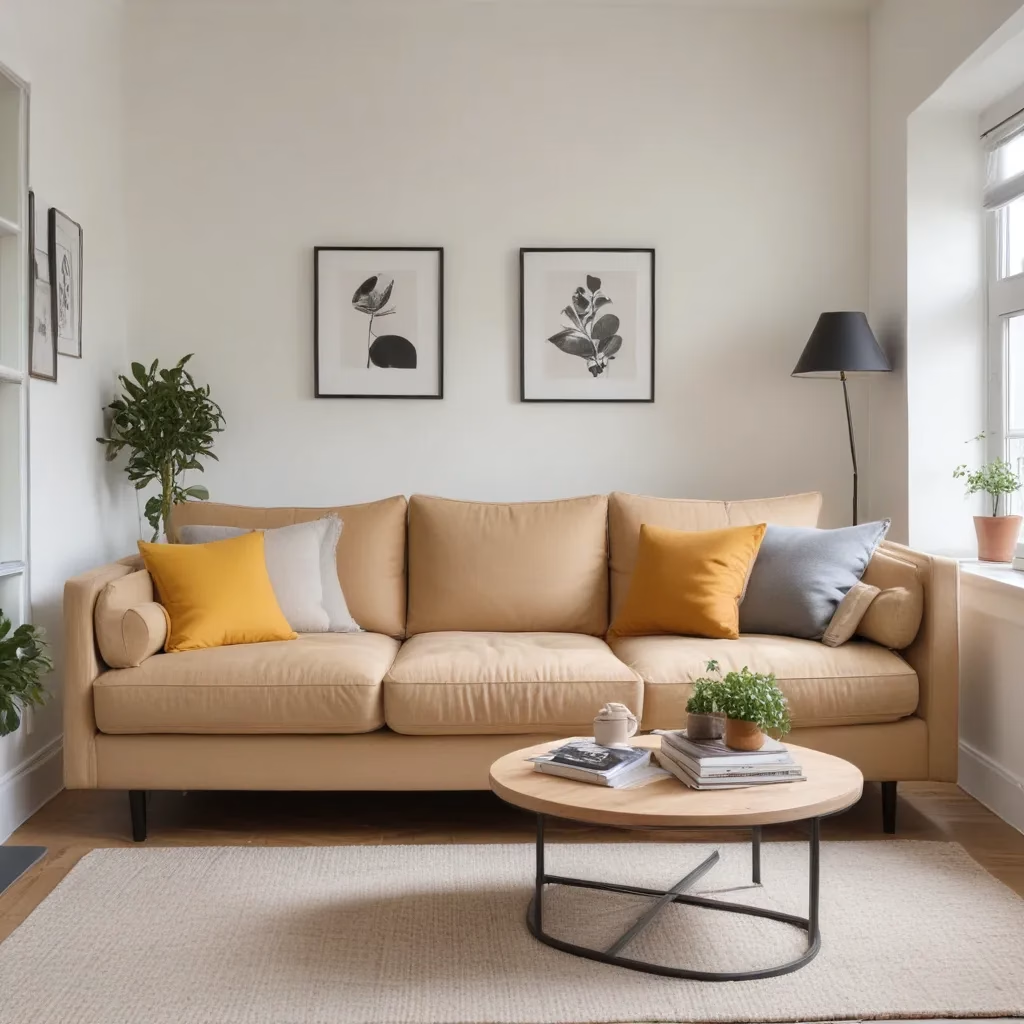
Sustainable Seating: Custom Sofas With Eco-Friendly Materials And Finishes
When sourcing a new sofa or sectional for your living space, comfort and aesthetics are often the top priorities. However, the environmental impact and long-term durability of your furniture should also be key considerations. Conventional sofas are commonly made with harmful chemicals, synthetic materials, and unsustainable production processes that can negatively affect indoor air quality and contribute to waste.
Now, this might seem counterintuitive…
Fortunately, the world of eco-friendly furniture is rapidly evolving, offering stylish and high-quality sofas crafted from renewable, recyclable, and biodegradable materials. By choosing a sustainable sofa, you can enjoy luxurious lounging while supporting a cleaner, greener future for your home and the planet.
Fabric and Upholstery Selection
The fabric and upholstery of a sofa are crucial not only for its visual appeal but also its longevity and environmental impact. Many traditional upholstery materials, such as polyester and vinyl, are petroleum-based and can release volatile organic compounds (VOCs) into the air over time. These VOCs have been linked to various health concerns, including respiratory issues and allergies.
Eco-Friendly Fabric Options
To minimize your carbon footprint, opt for natural, organic, and renewable fabrics like:
- Organic cotton: A biodegradable and pesticide-free textile that is soft, durable, and easy to clean.
- Hemp: A fast-growing, resilient fiber that requires minimal pesticides and water to cultivate.
- Linen: Derived from the flax plant, linen is a breathable, hypoallergenic, and biodegradable fabric.
- Recycled polyester: Made from recycled plastic bottles, this fabric diverts waste from landfills while maintaining durability.
- Wool: A natural, renewable, and biodegradable fiber that is also inherently stain- and fire-resistant.
When possible, look for fabrics certified by organizations like GOTS (Global Organic Textile Standard) or Oeko-Tex, which double-check that the use of sustainable and non-toxic manufacturing practices.
Durability and Stain Resistance
Choosing a sofa with durable, stain-resistant upholstery can extend its lifespan and reduce the need for frequent cleaning or replacement. Consider performance fabrics that are designed to withstand heavy use, such as:
- Microfiber: A synthetic material that is soft, easy to clean, and highly resistant to stains and wear.
- Velvet: A luxurious, durable, and easy-to-maintain fabric that can withstand the demands of daily life.
- Leather: A long-lasting and naturally stain-resistant material, though it’s important to source ethically produced leather.
Texture and Aesthetic Considerations
While prioritizing sustainability, don’t forget to consider the visual appeal and tactile experience of your sofa’s upholstery. Explore a range of textures and patterns that complement your existing decor and personal style, from plush velvet to sleek, modern microsuede.
Living Room Layout Tips
The placement and arrangement of your sofa can have a significant impact on the overall functionality and aesthetic of your living space. By thoughtfully considering the layout, you can create a comfortable and inviting environment that showcases your sustainable sofa.
Space Planning for Sofa Placement
When determining the optimal location for your sofa, start by evaluating the size and shape of your living room. Measure the available floor area and consider traffic flow, as well as the placement of other furniture and architectural features like windows and doorways.
Balancing Function and Aesthetics
While you want your sofa to be the focal point of the room, it’s important to strike a balance between form and function. Position the sofa to encourage conversation and facilitate a natural flow, while also ensuring it doesn’t obstruct walkways or interfere with other activities.
Complementary Furniture Arrangements
Pair your sustainable sofa with other eco-friendly pieces, such as reclaimed wood coffee tables, rattan accent chairs, or natural fiber area rugs. This cohesive approach will create a harmonious and visually appealing living space that showcases your commitment to sustainable design.
Sofa Care and Maintenance
Proper care and maintenance are essential for preserving the longevity and performance of your eco-friendly sofa. By following a few simple steps, you can double-check that your sustainable seating investment continues to look and feel its best for years to come.
Cleaning and Upkeep
Upholstery Cleaning Techniques
Depending on the fabric, your sofa may require specific cleaning methods. For natural fibers like cotton or linen, use a gentle, eco-friendly detergent and warm water. Avoid harsh chemicals or abrasive cleaning tools, as these can damage the fabric.
Spot Removal and Stain Treatment
When dealing with spills or stains, act quickly to blot the affected area with a clean, absorbent cloth. Avoid rubbing, as this can spread the stain. Consult the manufacturer’s guidelines for recommended spot-cleaning solutions, or try a mix of mild soap and water.
Preserving Fabric Integrity
To maintain the softness and vibrancy of your sofa’s upholstery, regularly vacuum or gently brush the surface to remove dust and debris. Rotate and fluff the cushions to double-check that even wear and prevent premature sagging.
Extending Sofa Lifespan
Proper Use and Handling
Encourage family members and guests to sit gently on the sofa, avoiding jumping or excessive bouncing, which can compromise the integrity of the frame and cushions over time.
Routine Maintenance and Repairs
Periodically inspect your sofa for any loose screws, creaks, or other signs of wear and tear. Address minor issues promptly to prevent further damage. Consider professional upholstery or furniture repair services for more complex problems.
Storage and Transportation
If you need to move or store your sofa, take care to protect the upholstery and frame. Use furniture covers or blankets to shield the fabric from dirt, scratches, and sun exposure. When transporting, secure the sofa to prevent shifting or damage.
Styling for Comfort and Aesthetics
Sustainable sofas not only contribute to a healthier living environment but can also elevate the overall look and feel of your space. By incorporating thoughtful design features and complementary decor, you can create a visually stunning and exceptionally comfortable seating arrangement.
Ergonomic Design Features
Cushion Density and Support
Look for sofas with high-density foam or natural latex cushions that provide ample support and comfort for extended lounging. Avoid low-quality polyurethane foams, which can break down quickly and lose their shape.
Armrest Height and Angle
Properly positioned armrests can significantly enhance the ergonomics of your sofa, allowing for a more relaxed and supported posture. Pay attention to the height and angle of the armrests to double-check that they comfortably accommodate your seating preferences.
Back Support and Recline Options
Adjustable or multi-position back supports can help alleviate strain on your spine and promote better posture. Some eco-friendly sofas even offer reclining mechanisms for a truly customized lounging experience.
Integrating Sofas into Décor
Colour and Pattern Coordination
Choose sofa upholstery that complements the colour palette and style of your living room. Neutral tones like beige, gray, or taupe can serve as a versatile foundation, while bolder patterns or jewel-toned hues can add a touch of personality.
Mixing Textures and Materials
Incorporate a variety of textures and materials into your living room design to create visual interest and depth. Pair your sustainable sofa with wooden coffee tables, woven baskets, plush area rugs, and metallic accent pieces for a cohesive, high-end look.
Accessorizing for Visual Interest
Elevate your sofa’s aesthetic by strategically placing throw pillows, blankets, and artwork around it. These finishing touches can enhance the overall ambiance and make your sustainable seating the undisputed focal point of the room.
Furniture Buying Guides
When investing in a new sofa or sectional, it’s essential to carefully evaluate the quality and sustainability of the product. By understanding the key factors to consider, you can make an informed decision that aligns with your eco-conscious values and lifestyle needs.
Evaluating Sofa Quality
Construction and Frame Integrity
Examine the sofa’s frame, paying close attention to the joints, support system, and overall construction. Look for hardwood frames that are glued, doweled, and reinforced for long-lasting durability.
Cushion Fillings and Density
Test the cushions for comfort and support. Opt for high-density foam or natural latex fillings that won’t quickly lose their shape or firmness.
Joints and Hardware Durability
Inspect the sofa’s joints, hinges, and other hardware to double-check that they are well-crafted and securely fastened. These details will contribute to the overall stability and longevity of the piece.
Sustainable Sourcing Practices
Certified Eco-Friendly Materials
Look for sofas made with FSC-certified wood, organic cotton, recycled polyester, or other materials that have been independently verified as sustainable.
Responsible Manufacturing Processes
Consider brands that prioritize ethical, low-impact production methods, such as using renewable energy, minimizing waste, and ensuring fair labor practices.
Transparent Supply Chain
Seek out furniture companies that openly share information about their supply chain and manufacturing processes, allowing you to make an informed purchasing decision.
By investing in a high-quality, sustainably-sourced sofa, you can enjoy both immediate and long-term benefits for your home and the environment. With careful consideration of materials, construction, and design features, you can create a comfortable and stylish living space that aligns with your values and enhances your daily life.
Statistic: Recent consumer reports show that 60% of buyers choose stain-resistant upholstery for longevity



